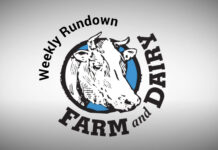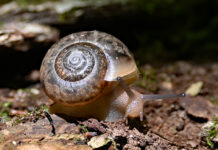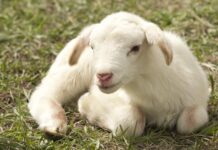Last night, I couldn’t sleep. The wind was howling, with a voice it usually reserves for winter, and lashing rain so forcefully against the windows I kept thinking it must be hail.
All my tomato starts were lined up beside the house covered with a blanket. Would they still be alive in the morning?
I’ve written before how spring in western Dakota usually involves quite a few fits and starts. The weather warms, we tumble from our houses in t-shirts praising the sun. The next day it’s back to winter coats and knit caps, and we grumble to our neighbors, “I’m ready for this cold to be over.” The sun returns, and so does our joy — until the next morning when we wake to snow. And so it goes, for most of the months of April and May.
When spring finally arrives for good, it lasts about a week. It’s a beautiful week brimming with lilacs and chubby bumblebees, gentle breeze and ripening green grass. We do our chores in shirtsleeves without breaking a sweat while the evening pools sweetly around us.
Then, quite abruptly, it’s the height of summer. The pasture smells like bread baking, the heat of midday leaves hazy mirages on the horizon and the lilac blossoms turn brown, shrinking back to dry seed shells. Our week of spring is over.
I thought last week was our week of spring. It was almost hot, but not quite. I worked in the garden, the kids played outside. I let the ducklings spend the day in an old dog kennel without a heat lamp, splashing themselves with water from a red salad bowl and scuttling through the bright green grass. Every evening fell more gracefully into darkness than the previous one. It was glorious.
I predicted that our beautiful week would mean we were in for high heat next; boy, was I wrong! This morning it was still stormy and miserably cold. I went out to feed my bottle lambs in a coat and winter boots, clutching the warm bottles to my chest, thankful for the extra heat.
This unpredictable weather provides quite the challenge for those of us who farm and ranch. It’s just dumb luck that my lambs were born a month ago when it was much warmer. Cold rain on a newborn can be deadly, but for a healthy, month old lamb is no problem. My bums greeted me with happy bleats, their damp wool extra curly, but thick enough to keep them dry to the skin. They barely seemed to notice the chill in the air that had me shivering.
Meanwhile, the tomato starts also looked just fine, even though their blanket partially blew off during the storm. I used to baby my plants a lot more, but I’ve learned over the years that I might as well practice survival of the fittest in my seed starting, otherwise, by midsummer, I’ll end up with not much to show for my efforts.
The plants that grow here without aid (mainly forbs and grasses) do so because a thousand years of evolution taught them to thrive in circumstances other plants couldn’t survive. So I put my seedlings out as soon as possible, keep them hydrated, let them straggle toward the sun as they are able and then save the seeds from those that make it to summer’s end.
Most of the Dakotans I know are more like prairie grass than cultivated crops. Their roots are deep and their stems are tough, their blossoms and fruit aren’t showy, but they can handle a cold, hard rain at the end of May or a couple of years of drought.
Me and my seed-saved tomato starts are only a few years into this adventure, but we are getting tougher with every season, too. I can’t speak for the tomatoes, but age and experience have taught me that the cliche, “This too shall pass,” is true.
The weather will be different tomorrow, but today the babies still need bottles, the ducklings still need water and, as long as I keep moving, the cold isn’t too bad.













